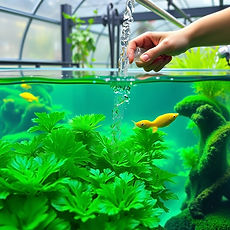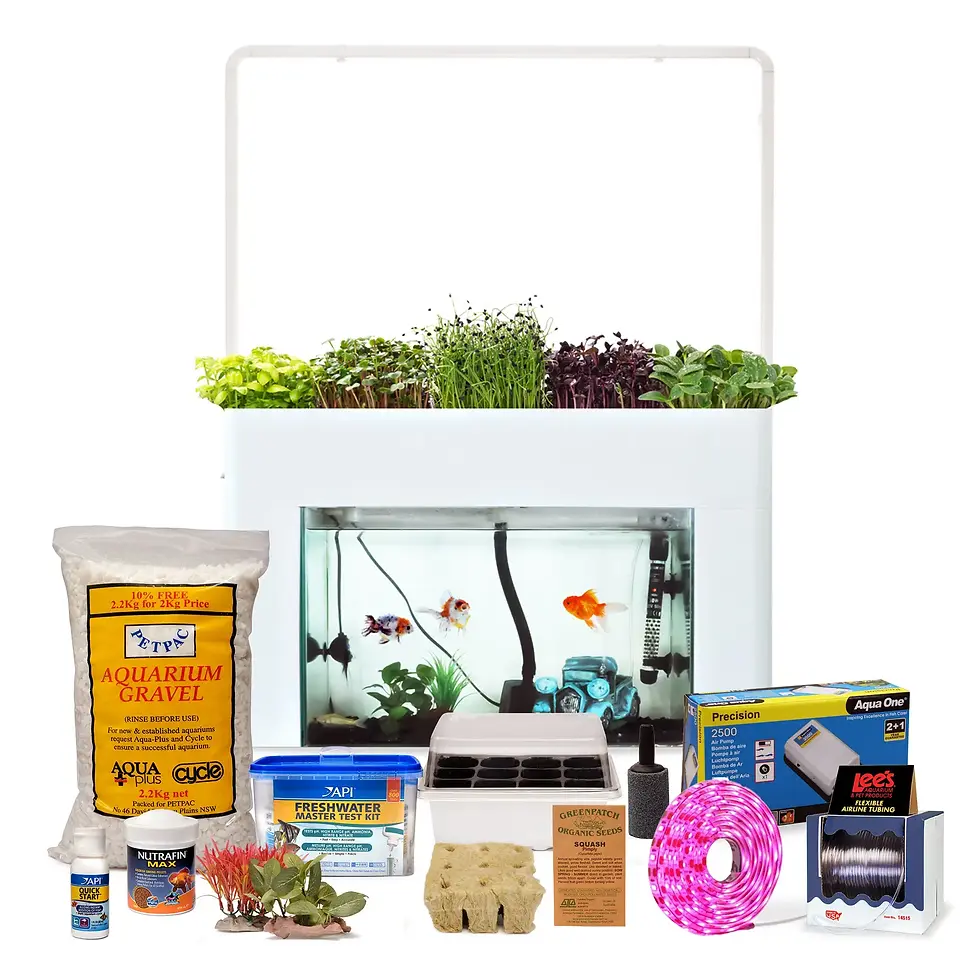Hydroponics is simply described as growing plants without soil. Hydroponics allows you to control more of the variables including pH levels, lighting and nutrients for optimal plant growth and produce yields. Water is the main method of delivering the nutrients to the plant’s roots, combined with growing media to help support the plant. Hydroponically grown plants dip their roots directly into nutrient-rich solutions, so plants get more of what they need much faster and easier. Hydroponic farming can be used in locations where soil conditions are too poor to support farming, or where space is limited. It can be done anytime and anywhere!
Aquaponics is a combination of aquaculture, which is growing fish and other aquatic animals, and hydroponics which is growing plants without soil. Aquaponics uses these two methods in a symbiotic ecosystem in which plants are fed the waste. In return, the plants clean the water that circulates back to the fish. Microbes play an important role in the nutrition of the plants. These beneficial bacteria gather in the spaces between the roots of the plant and convert the fish waste into substances the plants can use to grow!
Learn more about our Aquaponic packages
The benefits of Aquaponics

HOW AQUAPONICS WORKS?
Aquaponics is a natural, closed-loop growing system where fish waste is transformed into powerful plant nutrients. As ammonia breaks down, specialised bacteria such as Nitrospira convert it into nitrates — a clean, fish-safe nutrient source that plants absorb rapidly. This continuous nitrogen cycle keeps ammonia levels low, boosts plant health, and delivers faster, more sustainable growth. The result is a highly efficient, low-maintenance system that produces fresh food with minimal water and maximum nutrient uptake.




























